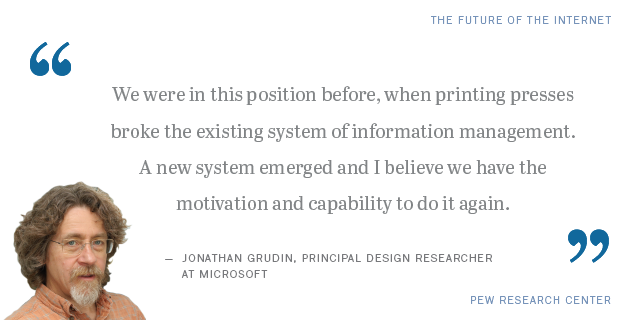Introduction to the topic Digital Truth.
In times of new media and fake news it is hard to know which facts are actually true and which are not but why is this a problem for humanity?
You might think that some misinformation might not be harmful, but a workshop of Yale Law School and the Floyd Abrams Institute for Freedom of Expression showed that fake news can have a bad influence on our society. This problem exists not only in politics but also in our daily life. But what means bad influence and how can we make the online world more transparent?
Since the beginning of time humans were never exposed to such tons of data as we know today. At the beginning of the internet age people did not really use or understand the power of the world wide web. It started around the turn of the century that humans got connected and since then it increased exponentially. The devices got easier to use and the screen design improved as well. Originally most of the information online was reduced to fun articles and some early staged websites with mostly bad usability but that changed quickly. More and more humans became as we call them “Users” and at the same time the amount of misinformation rose and the transparency decreased. Nowadays it is hard to distinguish what information is correct and what is only there to get our emotions out of control. Bots and people who distribute false stories for profit or engage in ideological propaganda are now part of our everyday life as we spend around up to seven hours a day in front of a screen. Since the beginning of the pandemic our daily screen time might have increased even more. The positive or negative health effects of screen time are influenced by quality and content of exposure. The most salient danger associated with “fake news” is the fact that it devalues and delegitimizes voices of expertise, authoritative institutions, and the concept of objective data – all of which undermines society’s ability to engage in rational discourse based upon shared facts.

In 2014 some researches tried to cluster algorithms which have emerged as a powerful meta-learning tool to analyze massive volumes of data generated by time-based media. They developed a categorizing framework and highlighted the set of clustering algorithms which were best performing for big data. However, one of their major issues was that it caused confusion amongst practitioners because of the lack of consensus in the definition of their properties as well as a lack of formal categorization. Clustering data is the first step for finding patterns which may lead us to detecting misinformation, false stories, ideological propaganda or so-called fake news. It is also a method for unsupervised learning. Furthermore, it is a common technique for statistical data analysis used in many other fields of science and if used correctly it could be a game changer for our online and offline society.

Why does Fake News exist?
A pretty important thing to know about social media, is that always the most recent published or shared content is the first you will see. That means if there is no reliable recent post on a topic, it leaves a so-called data void behind, which means as soon as somebody publishes something new on this topic, it will be shown first. This comes from the fact that we always long for “new” news, despite the fact that no one, no tool nor algorithm has ever screened these information verifying its accuracy.
What about Twitter?
Since May 2020 Twitter is trying to make it easy or easier to find credible information and to limit the spread of potentially harmful and misleading content. They introduced new labels and warning messages that will provide additional context and information on some Tweets. These labels will link to a Twitter-curated page or external trusted sources containing additional information on the claims made within the Tweet.


So Twitter is one of the major social media platforms actually labeling content, despite it being the Tweet of the current president of America alias Donald J. Trump. Also they are actively trying to decrease the spread of misinformation though introducing an extra notice before you can share conflicting content. Since content can take many different forms, they started clustering the false or misleading content into three broad categories:

Of course Twitter is not the only platform labeling false information or content going viral – Facebook and Instagram started doing that too. Instagram has been working with third-party fact checkers, but up until now the service was far less aggressive with misinformation than Facebook. Also qualitativ fact checking takes time, which can be problematic and there is still some catching up to do.

Labeling or removing postings is a first approach in the right direction, but it does not solve all issues that come with false information and how we interact with it. This is why this topic is so important for the future and the wellbeing of our society.
Sources:
Fighting Fake News Workshop Report hosted by The Information Society Project & The Floyd Abrams Institute for Freedom of Expression
Links:
https://towardsdatascience.com/the-5-clustering-algorithms-data-scientists-need-to-knowa36d136ef68
https://www.semanticscholar.org/paper/A-Survey-of-Clustering-Algorithms-for-Big-Data%3A-and-
https://researchguides.austincc.edu/c.php?g=612891&p=4258046/I
https://unesdoc.unesco.org/ark:/48223/pf0000265552
https://muckrack.com/blog/2017/02/27/fake-news-bubble
